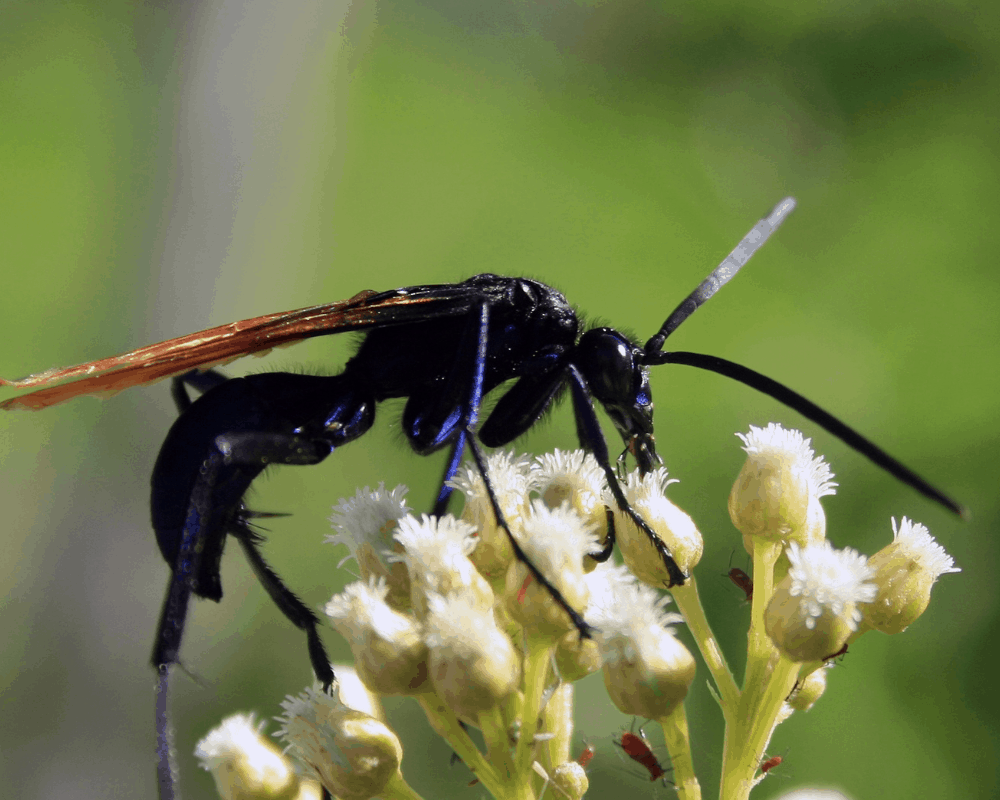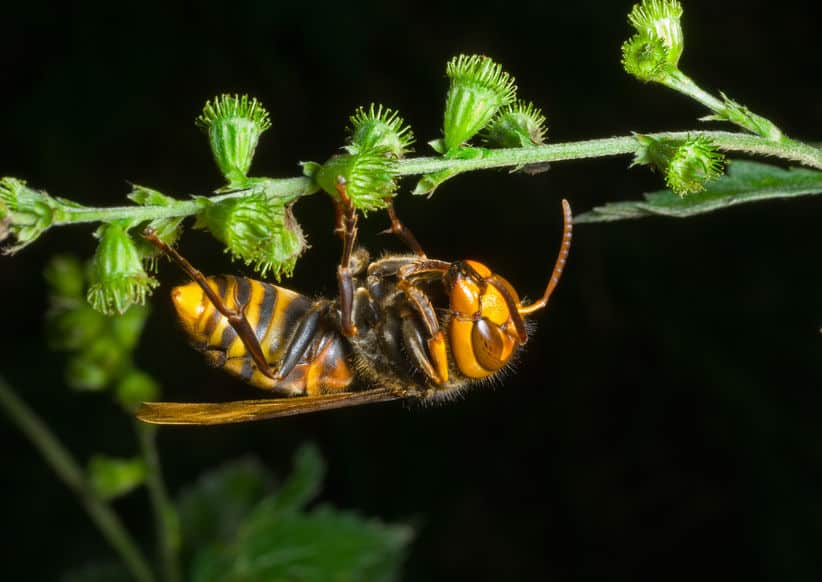Most of the world’s largest wasps are solitary wasps meaning they do not live in colonies and live isolated lives. They get so big because of the size of their prey. The larger the prey the larger the wasp. The exception is the murder hornet, the largest social wasp, these live in large colonies so despite not being the biggest they are certainly one of the scariest.
1. Tarantula Hawk, Pepsis grossa
With some specimens found to be almost 3 inches ( 7 cm) in length the tarantula hawk is hard to miss. Found in the Southern United States, their size can be partly explained by their prey. They are specialists at hunting tarantulas, the largest of the spiders. Despite the tarantula’s fearsome fangs, they are no defense for these wasps.
First, they paralyze them by inflicting a sting, then they carry the tarantula back to its nest. It is the tarantula hawk larva that will eventually kill the paralyzed spider. The larva bore into the tarantula and eat it from the inside out. Read more about the tarantula hawk here.

2. Giant Scollid Wasp, Megascolia procer
These really are giant wasps with a length of up to 2.5 inches (6.3 cm) they are native to Java, Indonesia. They can only live in the same environment as the Atlas beetle. That is because they have specialized to prey on these beetles. The Atlas beetle is itself huge, measuring up to 5 inches (13 cm) in length. The Giant scoliid wasp has developed to capture the grubs of these giant beetles. The grubs become a massive food source for the giant scoliid larva who consume them alive. These giant bugs result in giant wasps. Read more about the giant scoliid wasp here.

3. Mammoth Wasp, Megascolia maculata
Mammoth wasps are aptly named measuring up to 2.4 inches (6cm) in length. They are the largest wasps in Europe. They owe their size partly due to preying on the very large European rhinoceros beetle. They specialize in capturing the grubs of these beetles. The rhinoceros beetle grub has a fierce bite but is no match for the mammoth wasp. They paralyze them with their sting before delivering them to their nest site. The mammoth wasp larva will eat into the beetle grub and consume it alive. With so many nutrients it’s no wonder these wasps are so big.
. Read more about the mammoth wasp here.

4. Giant Cicada Killer Sphecius speciosus
The cicada killer, also known as the cicada hawk, is found in the United States. They can measure up to 2 inches (5 cm) in length. They are truly large wasps. They need to be big because as their name suggests they prey on cicadas. With a wingspan of up to 8 inches (20 cm) they make a big feast for the cicada killer larvae. The cicada killer paralyzes them with its sting before wrestling the body of the cicada back to its nearby nest (no mean feat). The cicadas become food for the wasp’s larva. They want the largest cicadas because the larger the cicada the larger the developing wasp will grow. Read more about the cicada killer here.

5. Giant Asian Murder Hornet, Vespa mandarinia
At around 1.8 inches (4.5 cm) in length, these are large wasps. They are also the only social wasp of this large size. That is significant because unlike solitary wasps that are only found alone these giant wasps amass in colonies of up to 1000. They also attack in numbers if their nests are threatened. This makes them potentially deadly with multiple stings capable of causing death to people. They are found in Asia. Read more about the murder hornet here.

